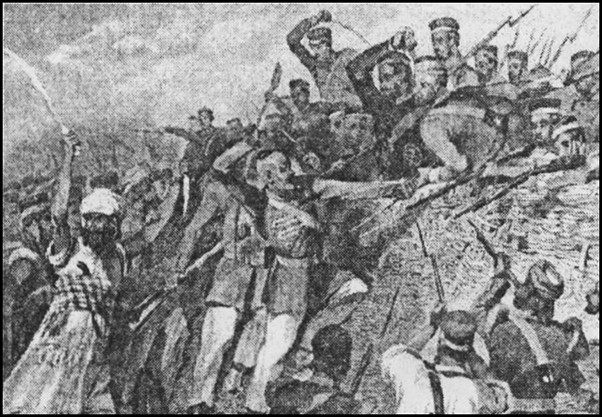The Revolt of 1857 and Its Representations
Examine any two sources presented in the chapter, choosing one visual and one text, and discuss how these represent the point of view of the victor and the vanquished.

That this figure shows ordinary people join the mutiny of 1857. Lucknow was one of the main centres. The sepoys of Awadh were joint by peasants, zamindars, traders and talukdars.
Source : Sisten and the tahsildar : This source indicate that the effect of the rebellions had spread even among those officers who had earlier supported the British. The English men worried about their lives, property, owner of women and children. The geographical extent of the revolt was much greater. The magistrate use to get news and development day to day through their governmental representatives but they were suspicious as later on magistrate of Sitapur came to know that the Sisten who came to him was a great sympathise of the rebellions.
Sponsor Area
Some More Questions From The Revolt of 1857 and Its Representations Chapter
What were the measures taken to ensure unity among the rebels?
What steps did the British take to quell the uprising?
Why was the revolt particularly widespread in Awadh? What prompted the peasants, taluqdars and zamindars to join the revolt?
What did the rebels want? To what extent did the vision of different social groups differ?
What do visual representations tell us about the revolt of 1857? How do historians analyse these representations?
Examine any two sources presented in the chapter, choosing one visual and one text, and discuss how these represent the point of view of the victor and the vanquished.
Why did the moneylenders and the rich people become victims of the wrath of mutineers in the Revolt of 1857?
Who led the Revolt of 1857 in following places–Kanpur, Jhansi, Bihar and Lucknow (Awadh).
Which people propagated the Revolt of 1857?
Give any two social reasons for the Revolt of 1857.
Mock Test Series
Sponsor Area
NCERT Book Store
NCERT Sample Papers
Sponsor Area